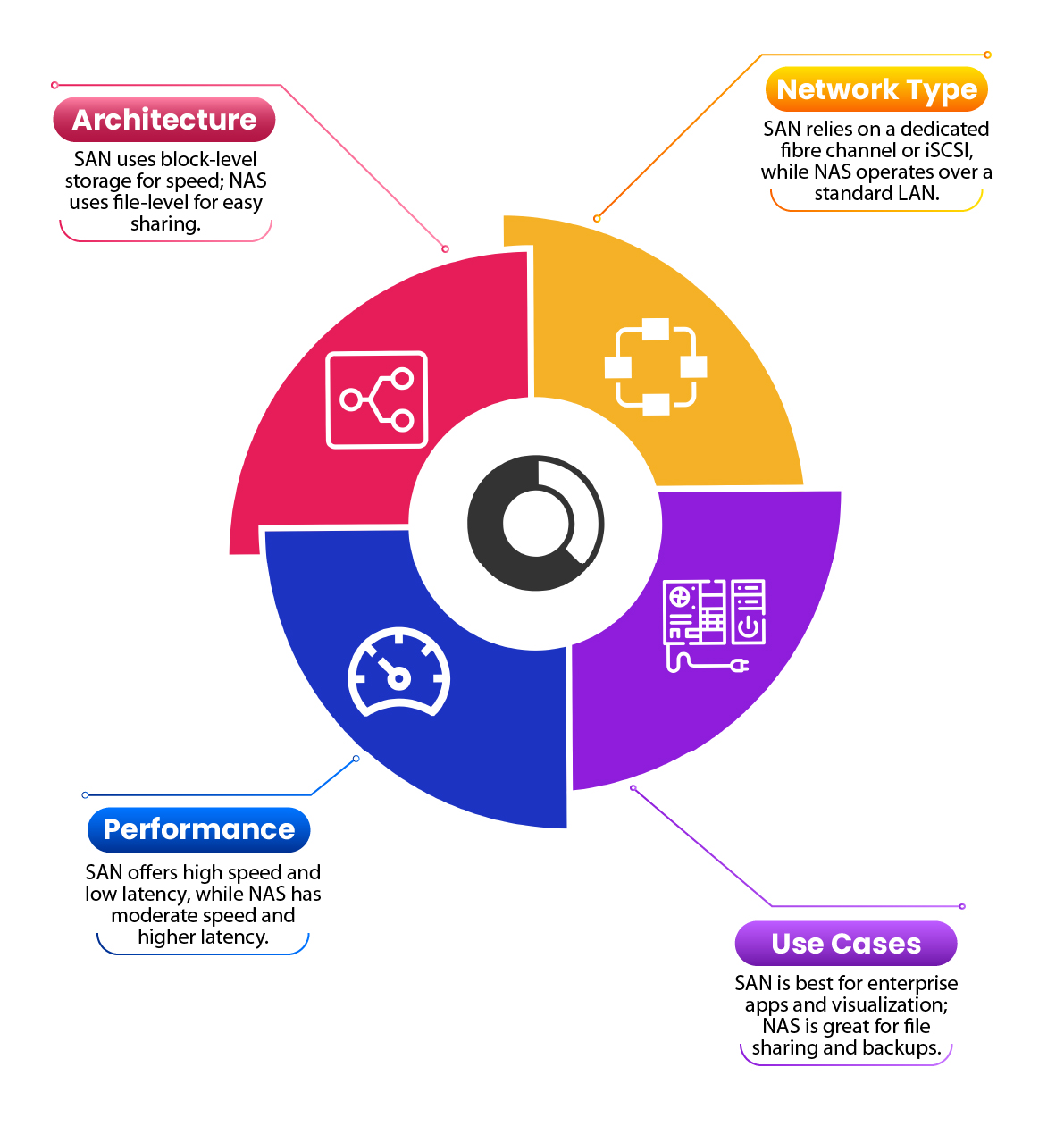SAN vs. NAS: Choosing the Right Storage Solution for Your Business Needs
In today's digital-first world, data is the backbone of every business. Efficient and reliable storage solutions are not just a convenience-they're a necessity for managing, accessing, and scaling data operations. Among the leading technologies in this space are Storage Area Networks (SAN) and Network Attached Storage (NAS). While both are essential tools for storing and managing data, each is uniquely designed to cater to specific business needs. A clear understanding of their differences can empower businesses to make the right choice for their data strategy.
What Is SAN Storage?
Think of a Storage Area Network (SAN) as a dedicated high-speed highway for your data. SANs provide block-level storage access via advanced protocols like Fibre Channel (FC), iSCSI, or Fibre Channel over Ethernet (FCoE). These networks are purpose-built for enterprise environments that demand lightning-fast, low-latency access to critical data-ideal for applications like databases, virtualization, and mission-critical workloads.
SANs operate on a separate network, ensuring your data storage doesn't compete with everyday network traffic. This separation guarantees optimized performance and uninterrupted operations, even under heavy data loads.
What Is NAS Storage?
On the other hand, Network Attached Storage (NAS) is your go-to for simple, accessible, and affordable file-level storage. NAS devices connect directly to your existing local area network (LAN) and allow multiple users or devices to share files seamlessly. Using protocols like NFS, SMB, or CIFS, NAS provides an intuitive way to collaborate, store, and access files across devices.
Designed for small to medium-sized businesses or even home networks, NAS is prized for its ease of deployment and cost-efficiency. Whether you're running a creative agency, managing backups, or sharing media files, NAS makes file sharing hassle-free.
SAN vs NAS: Choosing the right storage solution

Choosing the right storage solution often comes down to the specific demands of your environment. Here's how SAN and NAS shine in different scenarios:
When to Choose SAN Storage
SAN storage is the gold standard for performance, reliability, and scalability, making it the backbone of enterprise-grade setups. Key use cases include:
- Database Servers: With unmatched throughput and ultra-low latency, SAN is built to handle high-volume database transactions effortlessly.
- Virtualized Environments: Virtual machines thrive with SAN's block-level storage, delivering the speed and efficiency needed for smooth virtualization.
- High-Availability Applications: Designed for continuous uptime, SAN's redundancy and failover mechanisms make it indispensable for mission-critical applications.
Use Cases for NAS Storage
NAS stands out as a cost-effective and user-friendly solution for shared access and media-centric tasks. Common use cases include:
- File Sharing: Seamlessly share and access files across your network-perfect for team collaboration and document management.
- Backup and Archiving: Simplify backup operations with NAS, offering a reliable and centralized place to store critical data.
- Media Streaming: NAS is a favorite for streaming music and videos in homes and offices, ensuring smooth playback and easy access.
Key Factors for Success
Selecting the right storage solution isn't just about technology-it's about aligning with your business goals. Here are the essential factors to consider when deciding between SAN and NAS:
- Performance Demands: Need blazing speed and minimal latency? SAN is your go-to for high-performance workloads. For everyday file storage and sharing, NAS delivers all the speed you'll likely need.
- Budget Priorities: SAN offers enterprise-grade capabilities, but at a premium. If cost-efficiency is key, NAS provides a robust solution without breaking the bank.
- Ease of Management: SAN requires expertise to set up and maintain, making it a better fit for businesses with dedicated IT teams. NAS, on the other hand, is plug-and-play, perfect for those with limited technical resources.
- Scalability: For fast-growing enterprises, SAN scales effortlessly to meet expanding demands. NAS shines in smaller setups with modest growth trajectories.
- Application Fit: Match the solution to your needs-SAN for databases, virtualization, and high-availability apps, or NAS for backups, file sharing, and media streaming.
Both SAN and NAS excel in their domains, but their differences make them uniquely suited to specific environments. SAN is a powerhouse for enterprises seeking top-tier performance and scalability, while NAS is a user-friendly, budget-conscious choice for small businesses and home networks.
Looking for the perfect fit? Asianet Enterprise offers comprehensive SAN and NAS solutions, tailored to meet your operational demands and ensure seamless data management. Let us help you make the right choice!
Learn More








